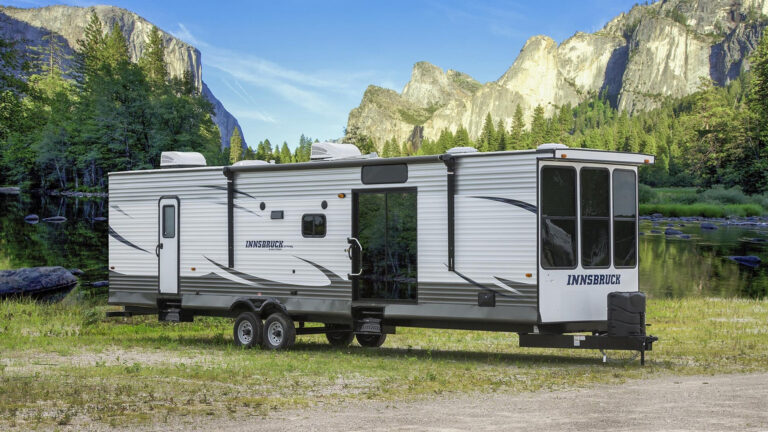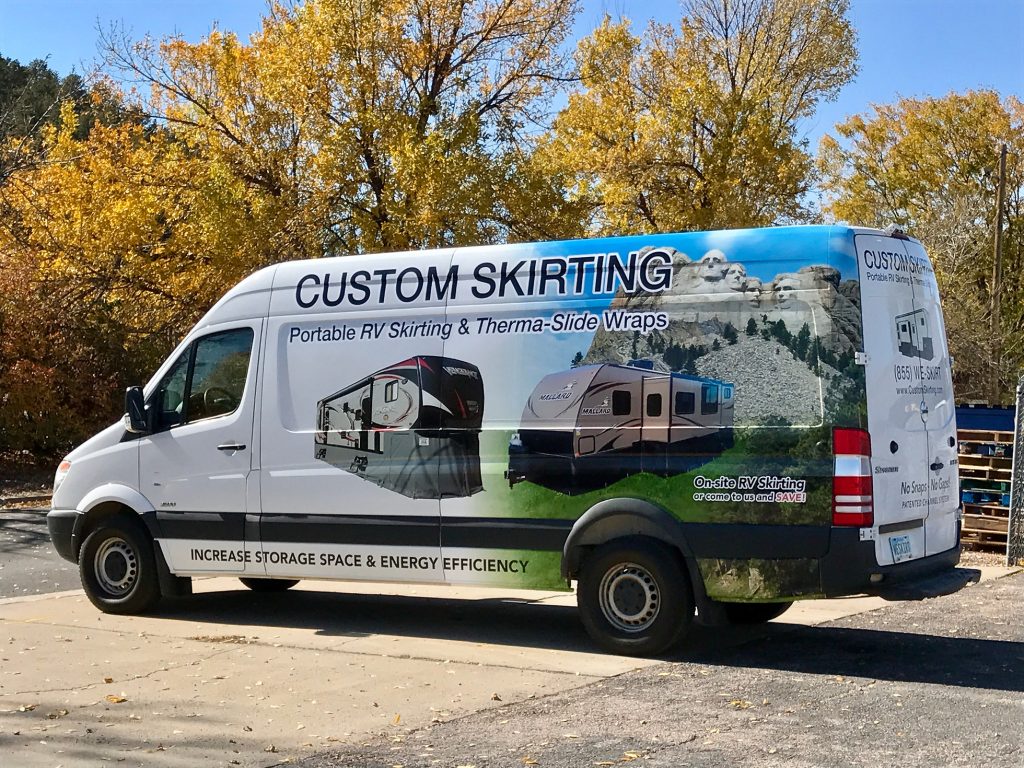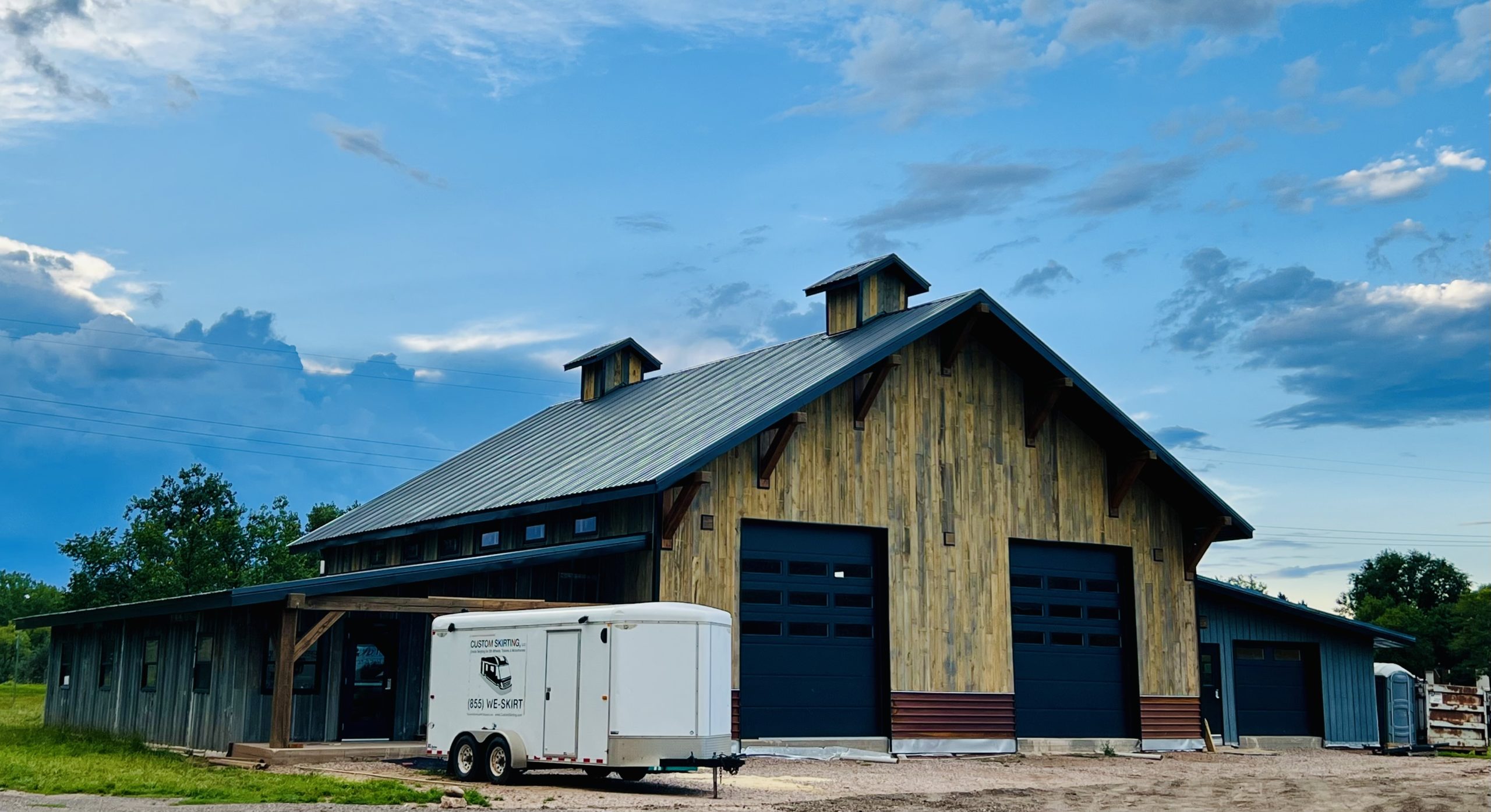Table of contents
- Key Features of Destination Trailers
- Destination Trailers vs. Travel Trailers: Key Differences
- Destination Trailers vs. Park Models: Understanding the Distinction
- Popular Destination Trailer Floorplans
- Advantages of Choosing a Destination Trailer
- Considerations Before Buying a Destination Trailer
- Discover the Perfect Destination Trailer Experience at Black Hawk Creek RV Park & Cabins
- Related Articles
When exploring the world of RVs and camping, many people ask themselves, what is a destination trailer? If you’re considering long-term RV living, seasonal stays, or simply want to enjoy a more comfortable and home-like RV experience, a destination trailer could be the ideal solution. In this guide, we’ll dive into the world of destination trailers, answering common questions such as what is a destination RV? and what is a destination camper? and explain how they differ from other RV types. Destination trailers, also known as destination RVs or campers, are specially designed for longer stays in a fixed location. Unlike traditional travel trailers that are built for frequent travel, destination trailers are intended to provide all the comforts of home while allowing for mobility when needed. Whether you’re staying at a seasonal campsite, a private plot of land, or a luxury resort, a destination trailer offers a unique balance of mobility and residential living, making it an increasingly popular option for those seeking an extended RV stay. Let’s take a closer look at these luxurious, spacious RVs, how they compare to other types of RVs, and why they might be the perfect choice for your next home-away-from-home.
Key Features of Destination Trailers
Destination trailers stand out due to their distinctive characteristics that make them a top choice for extended stays and semi-permanent RV living. So, what are destination trailers made of? They’re typically built with sturdier construction, heavier materials, and larger dimensions compared to traditional travel trailers. Here are some key features that set them apart:
Heavier Construction
Destination trailers generally weigh around 10,000 lbs, and this substantial weight is due to their use of residential-grade materials, increased size, and enhanced structural integrity. This means that what is a destination trailer in terms of towing requirements is different from a regular RV. These trailers typically require a tow vehicle of at least ¾-ton capacity to ensure safe transport.
Larger Dimensions
One of the most noticeable differences is the size of these RVs. Destination trailers are significantly larger than your typical travel trailer, with lengths ranging from 38 to 45 feet. Their larger dimensions allow for a more spacious interior, accommodating full kitchens, multiple bedrooms, and generous living areas.
Residential Amenities
Unlike standard RVs, which often feature compact appliances and smaller living spaces, these offer home-like amenities. This includes taller ceilings, larger windows, and sliding glass doors that provide an airy and open feel. Full-size appliances, including refrigerators, ovens, and even washers and dryers, are often standard in these trailers, making them perfect for long-term stays. For those seeking a destination camper or RV experience that mimics the comforts of home, these features make all the difference.
These characteristics allow RVers to enjoy a truly luxurious, extended stay without sacrificing comfort or convenience.
Destination Trailers vs. Travel Trailers: Key Differences
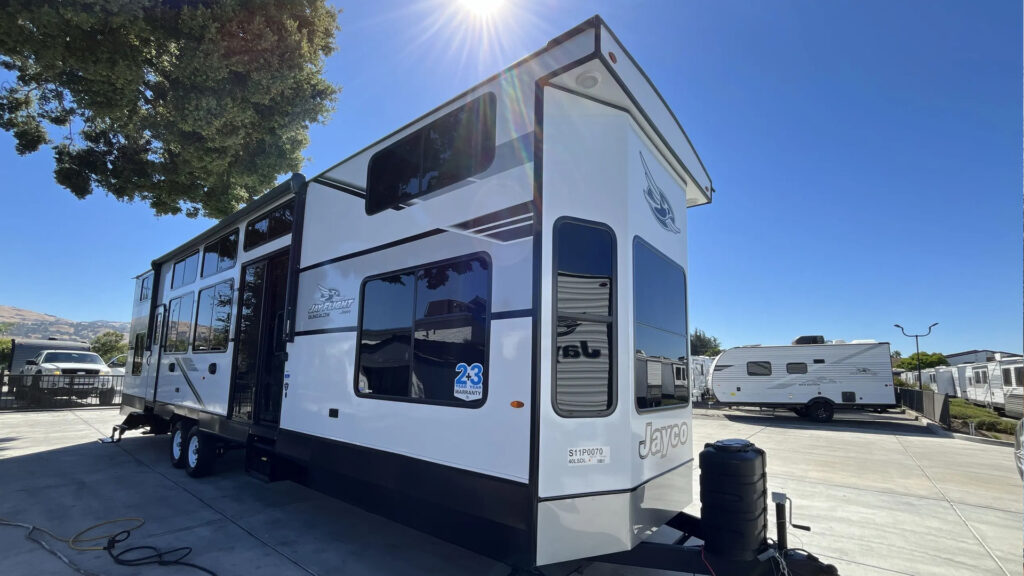
When comparing a destination trailer to a traditional travel trailer, it’s clear that their purposes and design features vary greatly. While both types of RVs provide mobility, destination trailers are meant for stationary living, offering much more space and comfort than typical travel trailers. Here’s a breakdown of the main differences:
Size and Weight
As mentioned earlier, destination trailers are much larger than traditional trailers. A typical travel trailer can range from 20 to 35 feet in length, while a destination travel trailer can exceed 40 feet. With the increased size comes increased weight—destination trailers often weigh twice as much, requiring a more powerful tow vehicle.
Mobility vs. Comfort
While a trailer is designed for mobility, allowing you to hit the road for frequent trips, a destination RV is designed for a more stationary lifestyle. This means that although you can move your trailer, it is not ideal for frequent travel. The trade-off is that you gain more living space and amenities for an extended stay, which is ideal for those who want a home away from home.
Setup Time
Another key difference is the ease of setup. While a travel trailer requires more frequent and quick setups, destination trailers are meant to be set up in one location for longer periods. They may require leveling, utility hookups, and stabilizing jacks, but this is generally done less frequently.
Destination Trailers vs. Park Models: Understanding the Distinction
A question that often comes up when discussing destination trailers is whether they’re similar to park models. While both provide extended living spaces for those seeking a semi-permanent or seasonal stay, there are some key differences.
Mobility
The primary difference between destination trailers and park models is mobility. What is a destination RV in comparison to a park model? Destination trailers retain their wheels and hitch assembly, which allows them to be moved if needed. In contrast, park models are built with the intention of remaining in one location and are generally not designed for relocation once placed.
Usage Flexibility
Another important distinction is in how they’re used. Destination campers can be used at a variety of locations, including campgrounds, resorts, or personal properties. Park models, on the other hand, are usually restricted to RV parks or locations where they are meant to remain long-term, making them less flexible in terms of relocation.
Size and Features
Both trailers and park models offer luxurious amenities and ample space for living. However, park models are typically larger, offering even more square footage than a destination camper.
Popular Destination Trailer Floorplans
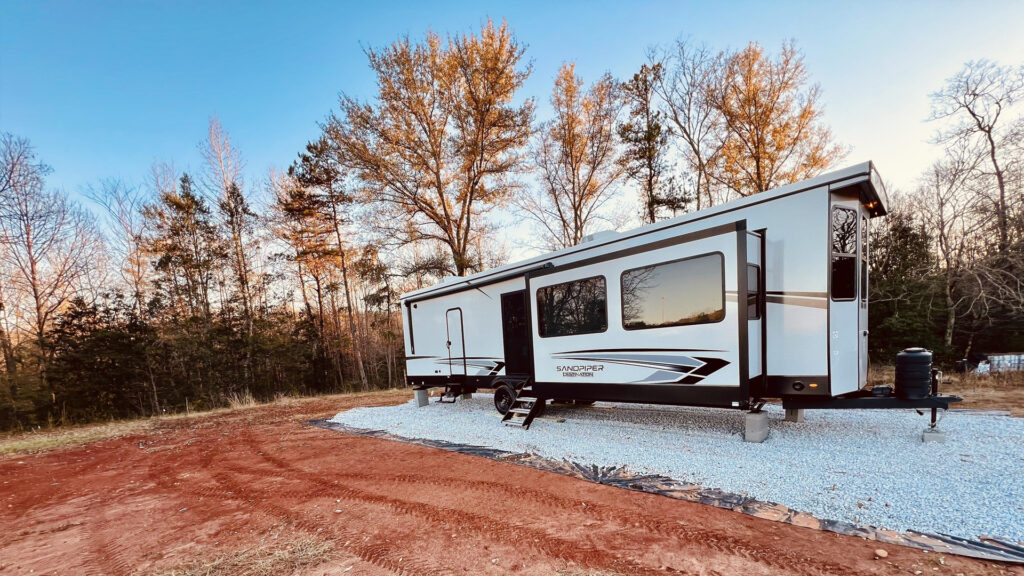
Destination trailers come in a variety of floorplans designed to suit different needs and preferences. Here are some popular options:
Floorplans with Lofts
For families or those who need extra sleeping space, lofted floorplans are a great option. Lofts offer additional sleeping capacity without compromising the main living areas. Examples of trailers with lofts include the Cedar Creek Cottage 40CDL and the Timberwolf 39LB, which both provide spacious living areas and added lofts for extra storage or sleeping space.
Floorplans without Lofts
If you prefer a more open concept without the additional floor space of a loft, there are plenty of trailers without lofts that maximize living areas. Models like the Sandpiper 420FL, Forest River Sierra 403RD, and Jay Flight Bungalow offer wide, open living areas with multiple slides to enhance comfort and space. These floorplans are ideal for those who want to prioritize living space without the need for extra sleeping capacity.
Advantages of Choosing a Destination Trailer
There are numerous reasons why a destination travel trailer might be the right choice for your lifestyle. Some of the key advantages include:
Comfort for Long Stays
Destination trailers are ideal for those planning to stay at a single location for an extended period. Their residential amenities and spacious interiors provide all the comforts of home, making them perfect for seasonal living or long-term vacationing.
Flexibility of Location
Unlike traditional homes, destination trailers allow you the flexibility to change your location when desired. Whether you want to enjoy the ocean breeze, mountains, or lake views, they offers versatility without the need for permanent commitment.
Cost-Effective Alternative to Vacation Homes
For those seeking a vacation home but not wanting to invest in a traditional property, these trailers offer a cost-effective alternative. They allow you to enjoy a luxurious living experience without the higher costs associated with purchasing and maintaining a vacation home.
Considerations Before Buying a Destination Trailer
There are several factors to consider:
Towing Requirements
Due to their large size and weight, these trailers require a vehicle capable of towing them safely. Be sure to have a truck with the appropriate towing capacity before purchasing.
Storage and Maintenance
Consider where you’ll store the trailer when it’s not in use and the maintenance involved in keeping it in top condition. These trailers may require more upkeep than smaller RVs due to their larger size and the complexity of their amenities.
Campground Restrictions
Many campgrounds or RV parks have specific restrictions on the size and type of RVs they allow. Check with your destination before committing to ensure that your trailer meets their guidelines.
Discover the Perfect Destination Trailer Experience at Black Hawk Creek RV Park & Cabins
Curious about destination trailers and how they can enhance your RV lifestyle? Visit Black Hawk Creek RV Park & Cabins, where you can explore South Dakota’s breathtaking attractions like Mount Rushmore and Badlands National Park while learning from fellow RV enthusiasts and experts. Our year-round park is the perfect base camp for discovering the advantages of destination trailers, all while enjoying spacious sites, excellent facilities, and stunning surroundings. Book your stay today and experience luxury RV living in the heart of South Dakota’s most iconic destinations!



